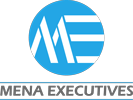In today’s fast-paced business environment, organizations must leverage every opportunity to gain a competitive edge. One of the most effective ways to do so is through strategic placement – ensuring that the right people are in the right roles at the right time. A well-executed placement strategy enhances workforce efficiency, boosts innovation, and drives long-term success.
For businesses in Saudi Arabia, Qatar, and Dubai, where industries are evolving rapidly, effective placement strategies can make a significant difference in market positioning. Whether hiring top executives, sourcing specialized professionals, or developing internal talent pipelines, placement can serve as a key driver for business growth. Here’s how organizations can use placement to gain a competitive advantage.
1. Align Placement with Business Goals
Successful placement begins with a clear understanding of business objectives. Organizations must define their long-term vision and identify the talent required to achieve those goals. This alignment ensures that every hire contributes directly to the company’s growth strategy.
For example, in Saudi Arabia, where Vision 2030 is shaping economic diversification, businesses must place leaders with expertise in emerging industries. In Dubai, where competition is fierce in technology, finance, and tourism, placing innovative professionals in key positions ensures market leadership. Similarly, in Qatar, where the economy is driven by infrastructure and energy, strategic placements help companies remain ahead of industry trends.
2. Prioritize Quality Over Quantity
Many companies focus on filling positions quickly rather than finding the best candidates for the role. However, competitive advantage comes from prioritizing quality over speed. Hiring top-tier professionals who align with company culture and long-term vision leads to better retention, increased productivity, and a stronger competitive position.
In Dubai, where businesses must attract international talent, ensuring high-quality placements differentiates companies from competitors. In Saudi Arabia and Qatar, where industries are evolving, hiring skilled professionals who can drive change is crucial for staying ahead in the market.
3. Leverage Data-Driven Recruitment
Data analytics plays a crucial role in optimizing placement strategies. Companies that leverage data to assess hiring trends, candidate performance, and workforce gaps gain a strategic advantage. Predictive analytics helps identify the best candidates for leadership positions, reducing turnover and ensuring a stronger workforce.
In Saudi Arabia and Qatar, where government initiatives focus on workforce nationalization, data-driven recruitment ensures companies meet localization goals while maintaining performance. In Dubai, where fast-moving industries require agile hiring, data analytics helps businesses adapt to changing talent demands.
4. Develop a Strong Employer Brand
A strong employer brand attracts top talent and ensures that organizations secure the best professionals in their industry. Companies known for their positive work environment, career growth opportunities, and strong leadership will naturally attract high-performing candidates.
In Dubai, where professionals have numerous job opportunities, employer branding plays a crucial role in attracting skilled individuals. In Saudi Arabia and Qatar, where new industries are emerging, businesses with strong reputations for leadership development gain a competitive edge in attracting and retaining talent.
5. Use Placement to Build Leadership Pipelines
Leadership succession planning is a critical aspect of maintaining a competitive advantage. Organizations that proactively identify and develop future leaders ensure business continuity and long-term success.
In Saudi Arabia, where nationalization programs encourage local workforce development, businesses can build strong leadership pipelines by placing high-potential Saudi professionals in key roles. In Qatar and Dubai, where expatriate talent plays a significant role, a combination of internal leadership development and external recruitment helps sustain business growth.
6. Focus on Cultural Fit
Hiring candidates who align with an organization’s culture enhances team collaboration, reduces conflicts, and increases productivity. Companies that prioritize cultural fit in placement strategies create more cohesive teams and stronger work environments.
In Saudi Arabia and Qatar, where cultural values influence business operations, ensuring cultural fit strengthens employee engagement. In Dubai, where multinational teams are common, businesses that successfully integrate diverse professionals gain a competitive advantage in global markets.
7. Utilize Specialized Headhunting Firms
Partnering with specialized headhunting firms ensures that organizations have access to the best talent in their respective industries. Headhunting firms provide deep market insights, extensive professional networks, and targeted recruitment strategies that help businesses secure top executives and specialized professionals.
In Dubai, where industries are rapidly evolving, headhunting firms help companies stay ahead of competitors by sourcing high-performing candidates. In Saudi Arabia and Qatar, where demand for leadership talent is increasing, partnering with specialized recruiters ensures businesses attract the best professionals in the market.
8. Adopt Remote Placement Strategies
With remote work becoming a global trend, companies that embrace remote placement strategies gain access to a wider talent pool. Remote hiring allows businesses to attract professionals with niche skills, regardless of geographical limitations.
In Dubai, where many businesses operate internationally, remote placement expands hiring options. In Saudi Arabia and Qatar, where digital transformation is a priority, remote hiring helps organizations secure top-tier talent without being restricted by location.
9. Retention-Focused Placement Strategies
Hiring the right employees is only part of the equation—retaining them is equally important. Companies that implement retention-focused placement strategies ensure long-term workforce stability, reducing turnover and maintaining high levels of employee engagement.
In Saudi Arabia, where industries are diversifying, ensuring long-term employee retention helps businesses build sustainable growth. In Qatar and Dubai, where employee mobility is high, retention-focused placement ensures companies do not lose top talent to competitors.
10. Continuously Optimize Placement Strategies
Competitive businesses regularly review and refine their placement strategies to ensure they are aligned with industry trends, workforce expectations, and company goals. Conducting regular assessments of hiring effectiveness and employee performance helps businesses stay ahead of the curve.
In Dubai, where industries are highly dynamic, continuous optimization ensures companies remain adaptable. In Saudi Arabia and Qatar, where national workforce goals are evolving, organizations that refine placement strategies maintain long-term success.
Conclusion
Placement is a powerful tool for gaining a competitive advantage in today’s business world. By aligning placement strategies with business goals, leveraging data-driven recruitment, prioritizing cultural fit, and developing leadership pipelines, organizations can secure top talent and drive long-term success.
For businesses in Saudi Arabia, Qatar, and Dubai, where market competition is increasing, effective placement strategies are essential for attracting high-performing professionals, retaining top talent, and ensuring sustainable growth. By continuously optimizing placement efforts and investing in strategic hiring, companies can position themselves as industry leaders and achieve long-term success.




